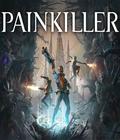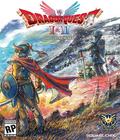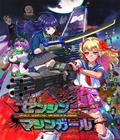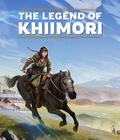Buy Chrono Cross: The Radical Dreamers Edition
It can be tough to follow up an immensely popular video game. Sequels always have a lot riding on their shoulders, and for every classic, there's a disappointment. It's even tougher when it's the sequel to Chrono Trigger, which is still widely considered to be one of the best JRPGs of all time. The PS1 sequel, Chrono Cross, was hamstrung out of the gate by the inevitable comparisons, and it ended up being more of a cult hit than a modern classic. Time heals all wounds, and Chrono Cross: The Radical Dreamers Edition gives that sequel a chance to be examined under a more objective eye.
Chrono Cross follows the story of Serge, a blue-haired boy whose literal job description is "silent protagonist." Serge is living a peaceful life in his isolated fishing village when something very strange happens. While meeting with his friend at the beach, he falls into a hole in space and time, and he awakens on what appears to be the same beach. He quickly learns that he's in an alternate dimension where he died as a child. Now Serge has to find a way home and why his death has caused such differences in the world. He's joined by a wacky cast of characters led by Kid, a blonde girl who knows more about Serge than she's letting on.
Chrono Cross is a difficult game to discuss because much of its essence lives deep in spoiler territory. It is at once a sequel to Chrono Trigger and an entirely different game, and the most awkward moments are when the two concepts meet. Serge's adventure stands well on its own merits, but once it connects back to its predecessor, things start getting messy. The fates of the previous cast members are controversial, and if you're going into Cross expecting a full-fledged Trigger sequel, you're in for a harsh awakening.
I liked Chrono Cross more in this outing than when I had played it previously. It's a distinctive game with a lot of unusual ideas, and it does a good job of building up mystery and creating dramatic sequences that leave you wanting more. Aside from a few characters, most of the party members share the same dialogue that's been run through a filter for a wacky accent, which isn't a great substitute for personality.
Chrono Cross has a turn-based battle system, so each character as a stamina bar that begins with a max of seven but can be increased with items. When performing a regular attack, you can choose to use one, two or three bars of stamina. The more you use, the stronger the attack, but it's also less accurate. You can continue to attack as long as you have stamina, with your accuracy gaining a boost each time you do. Once you've run out of stamina or choose to defend, your turn is over. Stamina is replenished when other characters in your party attack, so if you use all seven bars of stamina on one character, the stamina will be refilled when the next character in your party has a chance to attack.
This is made more complex by a few factors. Enemies do not necessarily get their own turns. Instead, they attack based on how much stamina you use and can even interrupt your turn to attack. This adds complexity to your choices. If you stop and defend, you can reduce the damage an enemy will do, but if you play too defensively, you're leaving a ton of damage on the table.
The other complexity is in how magic works. Magic is called Elements in Chrono Cross, and it's equipped on a character's element grid. The grid is divided into levels, and each character has their own grid. Some have a lot of high-level slots but few low-level slots, some are even across the board, and so on. You can buy elements from stores, win them from enemies, or discover them in dungeons. You can equip elements in slots, but if you equip elements in a slot below their level, they weaken. On the other hand, if you equip them in a slot above their level, they gain power. Each character also has special Techs that permanently take up a slot and are exclusive to them. Consumable items also need to be placed on the grid to use them.
Elements function on old-school Dungeon and Dragon rules. Every element that you've equipped can only be used once per battle. If you use a heal spell, you can't use it again until the next battle. The same goes for other spells, such as attack, steal, etc. To use the element in combat, you need to raise your element level, which goes up as you use stamina. Each element also has a stamina cost. Unlike attacks, elements can take your stamina into the negative, which means it's a longer time until you can attack again.
If that weren't complex enough, there's also an element field. Each spell is connected to one of various opposing elements signified by colors. When you use a spell, it shifts the element field toward that color. Some spells even shift the entire field. As the field fills with a specific element, spells of that element will do more damage, and spells of the opposite element will do less damage (i.e., fire spells do more damage on a red field, blue does less damage). Many enemies attempt to dominate the field with their color of choice, and you need to counter it to prevent their attacks from wiping you out.
It's an interesting combat system that takes a while to get used to, but it's a nice mix between having infinite resources and using them wisely. You can run away from literally every fight in the game, so you have plenty of chances to reconfigure the element grid for optimal damage. Since you have limited element uses per fight, it's wise to back off and rebuild the grid rather than trying to push through a fight that you're not ready for.
Chrono Cross has the strangest selection of party members you'll ever seen in a JRPG, bar none. Yeah, you have the expected clichés of "plot-important girl with a magic pendant" or "noble knight with a sword." They are joined by absurdities such as an adorable space alien, a living voodoo doll named Mojo, a skeleton clown, and a luchador psychic exorcist. If you can, I recommend going in unspoiled because seeing what absurdity waits around the next corner is much of the game's fun.
Unfortunately, Chrono Cross' character selection is a great example of how more isn't better. The game has 45 separate playable characters (you can't recruit all of them on a single playthrough) and a party size of … three, and Serge is one of those three party members. The result is that there is a ton of bloat, and a lot of characters fall by the wayside. It's especially strange, as some character recruitments are hidden behind bewildering choices. For example, to get one of the most plot-heavy characters in the game, you need to ignore a party member when they are dying of poison.
If Chrono Cross were a game like Suikoden where you had a large party and reasons to recruit as many characters as you can, that'd be great. Instead, it's a genuine struggle to find a reason to recruit half of the party members. Most of them are so gimmicky that they're worthless, and a smaller number are so absurdly overpowered that there is little reason to take them out of your party. It seems to punish experimentation. Even more frustrating is that the Chrono Trigger double/triple techs appear in the game, but there are only a handful of them, and they revolve around the better characters anyway.
Cross has a very strange and poorly explained experience system. You don't gain experience points normally, but you gain a star level every time you beat a boss. The star level increases your party's stats across the board, and for a while afterward, characters gain smaller stat bonuses as they fight. They only get bonuses if they fight, so the less time someone is in your party, the fewer bonuses they get. There's a flattening mechanic that assures there are specific stats you'll get at specific levels, but in theory, you should be swapping characters regularly to assure everyone gets some bonuses. In practice, since swapping characters isn't very convenient, you'll probably favor the characters you know are strong instead of fiddling with elements and party comps to gain stats on a random mushroom man you won't ever use again.
Chrono Cross includes traditional cheat options (no random encounter, boosts in combat, and auto-battle) that are common for most Square Enix remasters. It also lets you speed up or slow down time from the outset of the game, a feature that was previously only available with a New Game+. There are not a ton of changes that I was able to notice. It's a bare-bones re-release, which is a touch disappointing, if expected. I was hoping for some adjustments to the party system to make it more user-friendly.
Bundled in this re-release is Radical Dreamers, which functions as a proto-Chrono Cross that was released for an obscure Japanese-only accessory on the SNES. It's a visual novel rather than a full-fleshed RPG, and it tells an adaptation of a sequence early in the game featuring different versions of Serge, Kid, and a wizard. Like any good visual novel, it has multiple paths that you can follow and mysteries to solve. You can see where all the plot beats that eventually became Chrono Cross were in place but in very different shapes and form.
Radical Dreamers is interesting from a historical perspective. I can't recommend playing it before main Cross because it does spoil a huge chunk of the game's secrets, but it's different enough that it doesn't answer any questions. It's sort of an alternate dimension take on what exists. It's extremely cool to finally see it released in English, but as a visual novel, it would be largely forgettable if it weren't tied to the Chrono franchise. It's still worth a playthrough since it's short, but it's not something to revisit a lot.
The remastered graphics are interesting. Chrono Cross had bright, colorful characters and environments, and the remastered visuals do a good job of making those shine to emphasize how far Cross pushed the PS1. Sometimes, they look a little weird/smeared, but I didn't notice it much. The old visual style is also available if you want it, but I stuck with the updated graphics throughout. Chrono Cross is supposed to have a remastered soundtrack, but if so, I didn't notice. A lot of the songs sounded as I remembered. There are some remixes that play on the title screen, but when "Scars of Time" booted up, it hit all of the nostalgia buttons. If it is remastered, it didn't stand out to me as much as the Final Fantasy Pixel Remasters did.
Chrono Cross is a weird little JRPG that is arguably hindered by its connection to one of the genre greats. It has a distinctive feel and style, an interesting plot, and the craziest cast of characters you'll ever see in a JRPG. Weak characters and many nagging PS1-era flaws keep it from being a hearty recommendation. If you've passed on Cross because it's not Trigger 2, it's worth a shot, and Chrono Cross: The Radical Dreamers Edition is probably the best way to experience it.
Score: 8.0/10
More articles about Chrono Cross: The Radical Dreamers Edition











 Chrono Cross: The Radical Dreamers Edition is a remaster of the RPG Chrono Cross featuring a number of enhancements such as the ability to turn off enemy encounters and a newly refined soundtrack.
Chrono Cross: The Radical Dreamers Edition is a remaster of the RPG Chrono Cross featuring a number of enhancements such as the ability to turn off enemy encounters and a newly refined soundtrack.



















